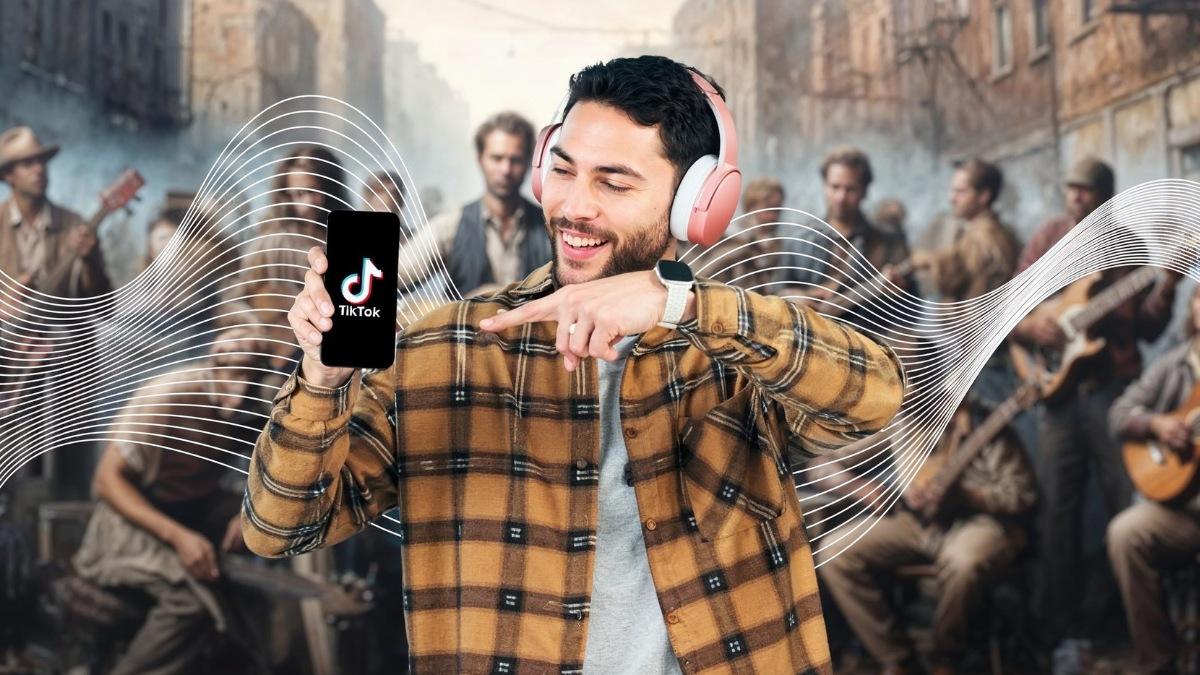Streaming a song 200,000 times on social media won’t even buy a cup of coffee for your favorite artist.
For music lovers who really want to support their favorite artists, choosing where to listen matters more than ever.
A recent analysis by Osker Wyld, an Iceland-based pianist, producer, and soundtrack composer, shows this harsh reality.
Over the past 7 years, his music has reached 137 million streams across 170 countries. But, the data shows that not all of these streams pay the artist the same.
Musicians earn much less from social media plays compared to regular streaming services. In fact, they need up to 200,042 streams on platforms like Instagram, Facebook, and TikTok to earn just one dollar.
The Harsh Economics of Music Streaming
Wyld’s data, which he shared on his website and covers a 7-year period, reveals the number of streams needed on each platform to reach the $1 mark.
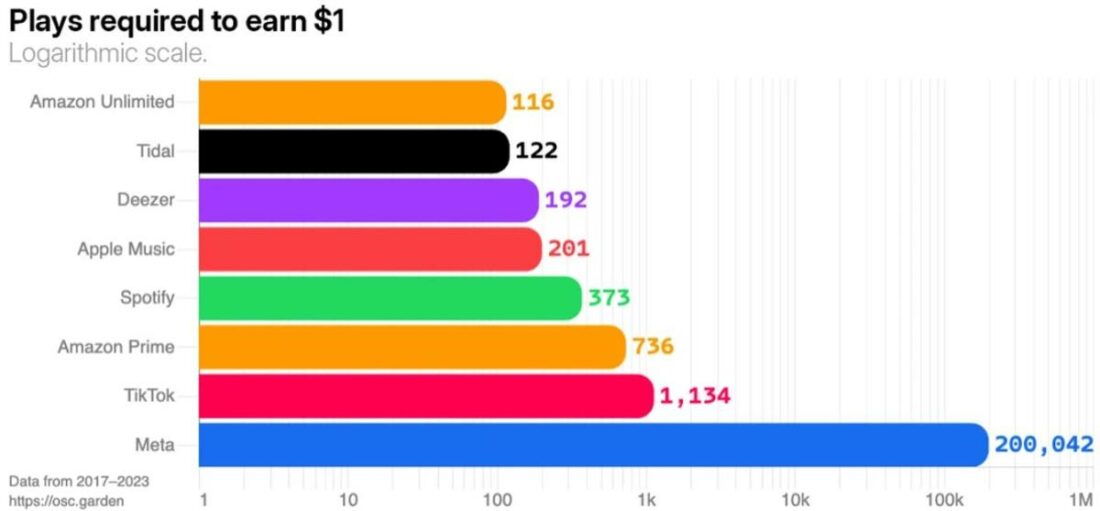
According to this, Amazon Music is the most profitable, with 166 streams translating to $1. Tidal comes next at 122 streams and Apple Music at 201. Spotify, despite being popular, needs 373 streams.
Then, the numbers get worse for Amazon Prime (736 streams), TikTok (1,134 streams), and Meta (200,042 streams).
This shows that services like Amazon Music and Tidal have the best royalty rates per stream, while social media platforms pay close to nothing.
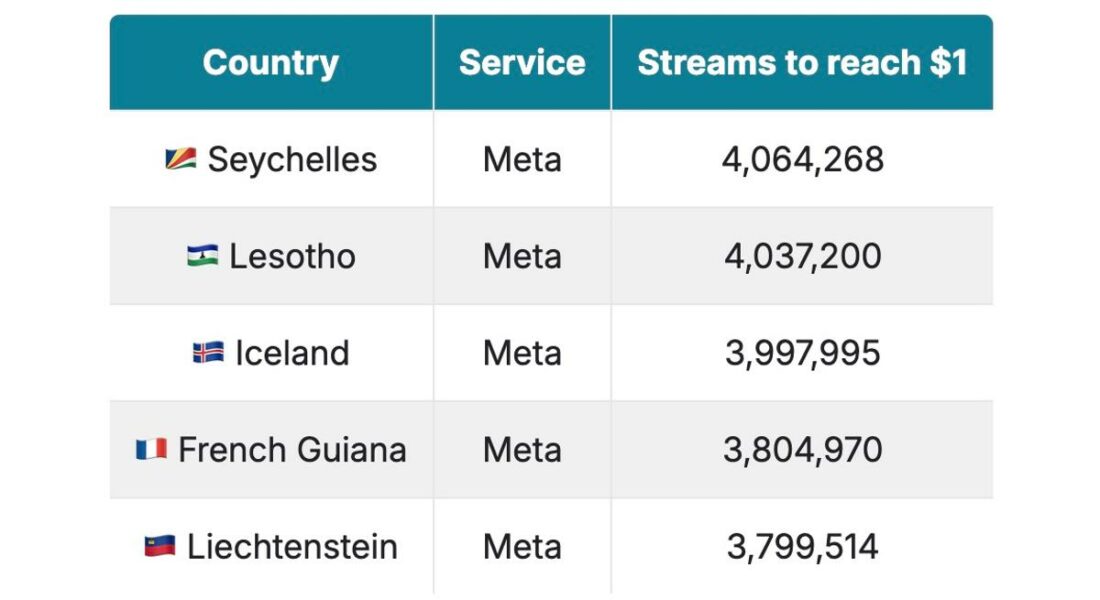
But even within these top services, pay rates can vary a lot. Things like the listener’s subscription status and location can change an artist’s earnings.
The Realities of Earning on Social Media Platforms
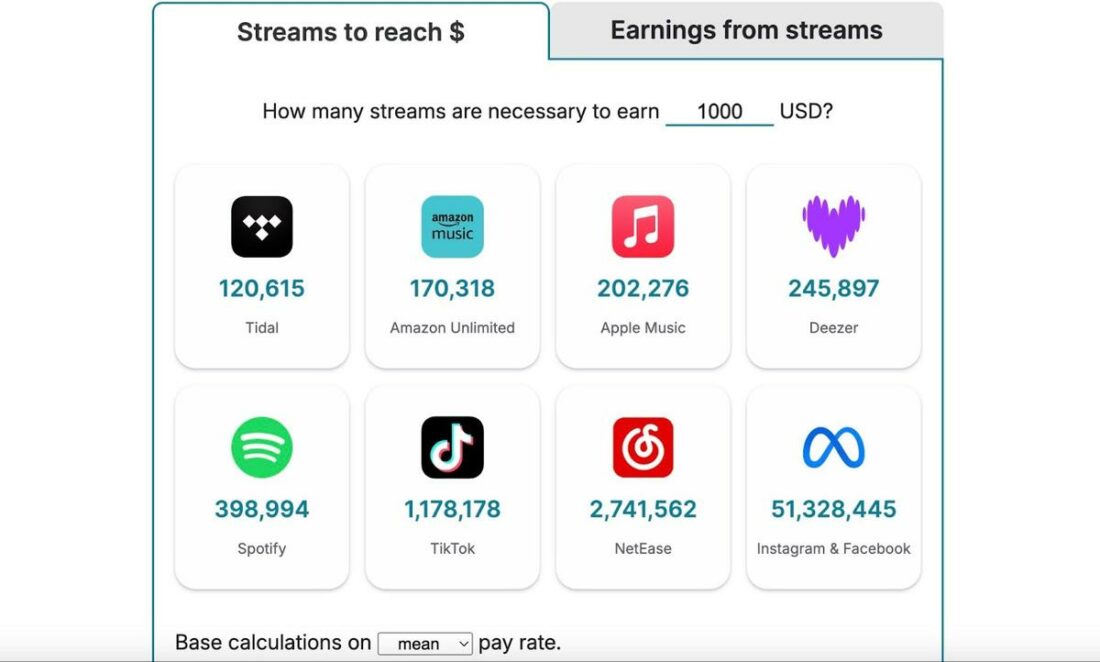
While Wyld’s music has been used in millions of Instagram and Facebook videos, the money he gets from these social media giants is very low.
Even though Meta made up over 97% of Wyld’s streams for a while, it generated less than 5% of his total revenue. This shows the huge difference between reach and actual earnings on social media.
So why is that?
Well, social media platforms don’t have clear metrics for compensation per stream like traditional music streaming services do.
According to a Reddit user, Instagram and Facebook don’t pay by views or impressions. They only pay by the number of videos created with the music. This means an artist’s earnings on these platforms are directly tied to the number of user-generated videos that include their songs.
TikTok’s payment model is also based on metrics. Recent data shows that TikTok pays about three cents for each new video that features a song.
This favors viral content. But it may not consistently support all artists.
But despite the low royalties, Osker acknowledged that being on social media platforms can lead to some conversion. Users can find their music there and maybe engage with it on better-paying platforms.
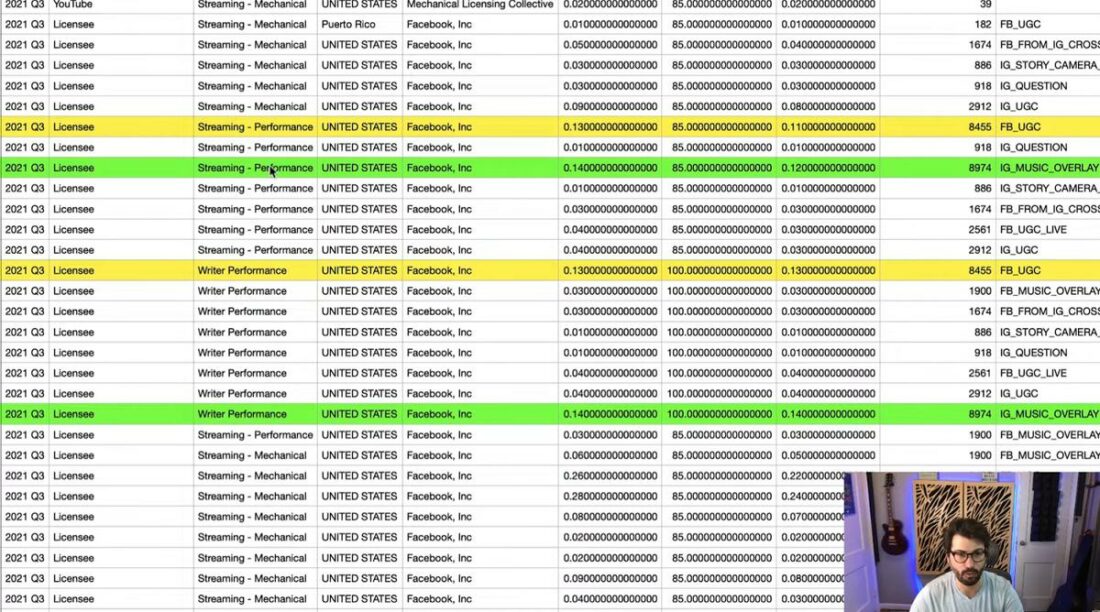
Still, relying on them remains a risky and often unrewarding strategy. It can lead to significant discrepancies in earnings, as demonstrated by Stock Music Musician, or Evan.
In a video, he revealed that despite thousands of plays of his music on the platform, the financial returns were minimal.
The Struggle for Fair Artist Compensation
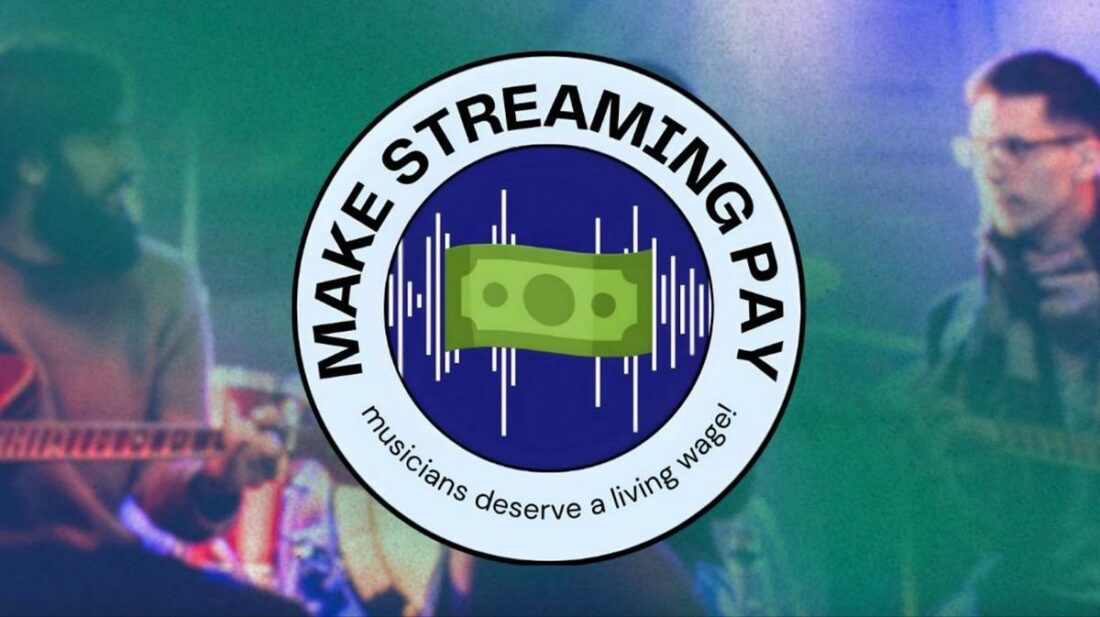
The debate about fair pay for artists has been a big issue for years, especially because of recent changes on both sides.
For example, Spotify’s “modernized” royalty system has hurt new artists by not paying on songs with less than 1000 streams per year. If this model existed seven years ago, Wyld would have lost $112.01, or 78.7% of his total Spotify earnings.
In March 2024, a new bill called the ‘Living Wage for Musicians Act’ was introduced to increase streaming payouts for artists. The bill suggests a new royalty fund that would pay musicians directly when their music is streamed. This would be separate from the current system involving labels and shareholders.
But just a few weeks later, Spotify lowered artist royalties. They did this by reclassifying premium plans that include audiobooks as “bundles”, even though they raised subscription prices.
The National Music Publishers’ Association (NMPA) criticized Spotify’s move, calling it “cynical” and “potentially unlawful”.
In response, Spotify introduced a new “Basic” $11 tier in 2024. This tier provides access to only music and podcasts, and will pay the agreed mechanical rate to songwriters and publishers.
